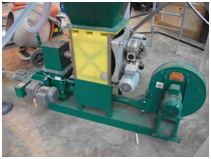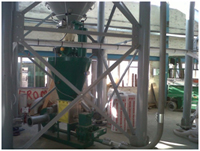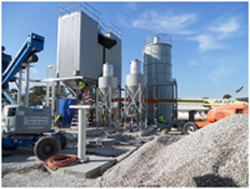Flue Gas Treatment
Filter Designs systems usually involve the supply and installation of a flue gas treatment plant which is based around a bag filter system to remove particulate from the air stream. As well as this function the system is often designed to treat the flue gas to ensure emissions are meeting environmental emission standards. Contaminants can include:

- Mercury and other heavy metals
- Dioxins
- Volatile Organic carbons
- Sulphuric Acid
- Hydrochloric Acid
- Oxides of Nitrogen
Often to remove these gases from a system various types of flue gas treatments are required. The injection into the system of Powdered Activated Carbon (PAC) is used to reduce heavy metal levels, such as mercury, and to reduce dioxins and volatile organic carbons (VOC’s). As no reasonably priced continuous emission monitoring of Dioxins is available a set dosing rate is injected which ensures levels of the above gas components are low.
To abate HCl and SO2, sodium bicarbonate or lime is injected before the bag filter inlet.

DeNOx plant in various guises can be specified to abate oxides of nitrogen, in a high temperature zone within the combustor or secondary dwell chamber.
All of these abatement systems are now designed in house and largely fabricated to our design, following several years of development.

Sodium Bicarbonate or Specialist Hydrated Lime is injected into the system to reduce the levels of acid gases. This is often delivered in tankers and pumped into a silo. The chemicals pass through a variable speed feeder linked to the Continuous Monitoring Equipment (CEMS) which through a PLC varies the speed of the feeder dependant on acid gas content in the system. Systems can be simple with feeder and injection or can be complex with reactors and recirculation equipment, dependant on plant size and sorbent used.


Often NOx emissions need controlling and Filters Designs use Selective Non Catalytic Reduction (SNCR) to control this again with feed rates linked to the CEMS. Sorbent used is normally Urea Formaldehyde in the form of a 40% solution from tankers or prill. Important with these systems is finding the right reaction temperatures with the system where our CFD capability can be used.
Please see our project web pages for specific applications
If you have any enquiries about our ceramic filters please give us a call on 01858 419104 or complete the enquiry form.
Our recent Projects
An empty warehouse is always a welcome place to start a project. This is because we have a blank canvas with which to design an ideal layout for a flue gas treatment plant. Once installed, our system cleans the gases from a waste boiler and waste infeed plant and will allow the end user to stop transporting waste around the country and manage it locally, save on transport costs and produce some electricity too.


